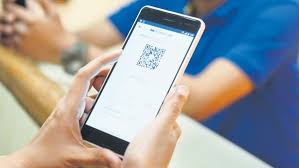How to make UPI payments without internet connection

UPI (Unified Payments Interface) has transformed how Indians transfer money. With a few taps, you can instantly send or receive funds using your smartphone. However, most UPI transactions require an active internet connection. So, what happens when you have no internet? Can you still make UPI payments? The answer is yes, thanks to a technology called USSD. This guide will explain how you can use UPI without the internet and why it matters.
Why Does UPI Usually Need the Internet?
UPI works by connecting your bank and payment app through the internet. Apps like Google Pay, PhonePe, or BHIM send your transaction request online to your bank and then to the recipient’s bank. The internet enables real-time communication and quick processing. Without it, these apps cannot work. That creates a problem when you have no data or Wi-Fi.
Fortunately, India introduced an alternative solution to this problem — USSD-based UPI transactions.
What is USSD and How Does It Help?
USSD means Unstructured Supplementary Service Data. It uses the cellular voice network to communicate with your bank’s servers. Unlike SMS, USSD opens an interactive session, letting you navigate through menus and send commands. Importantly, USSD does not require an internet connection or a smartphone.
In India, the government launched a platform called *99# to enable UPI payments through USSD. This system lets anyone with a basic phone and a mobile number linked to their bank account make UPI payments without internet access.
How to Make UPI Payments Without Internet Using USSD
Follow these simple steps to pay via UPI using USSD:
- Check if Your Mobile Number is Linked to Your Bank Account
You must use the mobile number registered with your bank. Usually, banks link your number automatically when you open an account or register for mobile banking. - *Dial 99# on Your Phone
Open your phone’s dialer, enter *99#, and press the call button. A menu will appear. - Choose Your Bank
From the menu, select your bank by entering the corresponding number. - Enter Your MPIN or UPI PIN
The system will ask for your MPIN (Mobile Banking PIN) or UPI PIN to verify your identity. This is the same PIN you use for other UPI apps. - Select “Send Money”
The menu offers several options such as sending money, checking balance, or viewing statements. Choose “Send Money.” - Enter Recipient’s UPI ID or Mobile Number
You can enter the Virtual Payment Address (VPA), which looks like yourname@bank, or the mobile number linked to the recipient’s UPI account. - Enter the Amount You Want to Send
Specify the amount you wish to transfer. - Confirm the Details and Authorize Payment
Review the details carefully. After confirmation, enter your UPI PIN again to complete the transaction. - Receive Confirmation
The system will notify you whether your transaction succeeded or failed.
Why Should You Use USSD for UPI Payments?
USSD offers several advantages, especially in areas with poor or no internet connectivity:
- No Internet Required: USSD works entirely without data, making it perfect for remote places.
- Works on Feature Phones: Even if you don’t own a smartphone, you can send money digitally.
- Secure Transactions: You must enter your UPI PIN for every transaction, keeping your money safe.
- Quick and Convenient: Once familiar with the menu, transactions take just seconds.
Things to Keep in Mind About USSD Payments
Despite its benefits, USSD has a few limitations:
- Transaction Limits: The Reserve Bank of India caps USSD payments at ₹5,000 per transaction to reduce risk.
- Limited Features: You won’t find features like bill payments, QR scanning, or transaction history available in smartphone apps.
- Bank and Network Support: Not all banks or telecom operators fully support USSD. You should check with your bank first.
- Possible Charges: Some telecom providers might charge a small fee per USSD session. Confirm with your operator before using.
Other Offline Payment Methods
If you cannot use USSD or prefer other options, consider these:
- Offline QR Codes: Some merchants generate QR codes you can scan. Although your phone needs to go online later, the merchant can accept your payment immediately.
- Mobile Wallets with Offline Mode: A few digital wallets allow offline transactions, syncing once you regain internet access.
- Cash: When all else fails, cash remains a universal payment method.
The Future of Offline Digital Payments in India
The government and banks continue to improve offline payment solutions to promote digital inclusion. The USSD platform has already helped millions access digital payments. Meanwhile, new technologies like offline QR codes and Bluetooth-based payments are in development.
Moreover, expanding 5G networks and smartphone penetration will make online UPI payments even more accessible. But until then, USSD remains a reliable backup for offline transactions.
Conclusion
Although most UPI payments need an internet connection, the USSD-based system allows millions of users to send money without data access. By dialing *99# and following simple menu prompts, even feature phone users can enjoy secure, instant digital payments. This offline option plays a crucial role in ensuring everyone can participate in India’s digital economy.
So, next time your internet fails or you’re in a low-connectivity area, remember USSD. It offers a quick and safe way to keep your money moving, no matter where you are.






